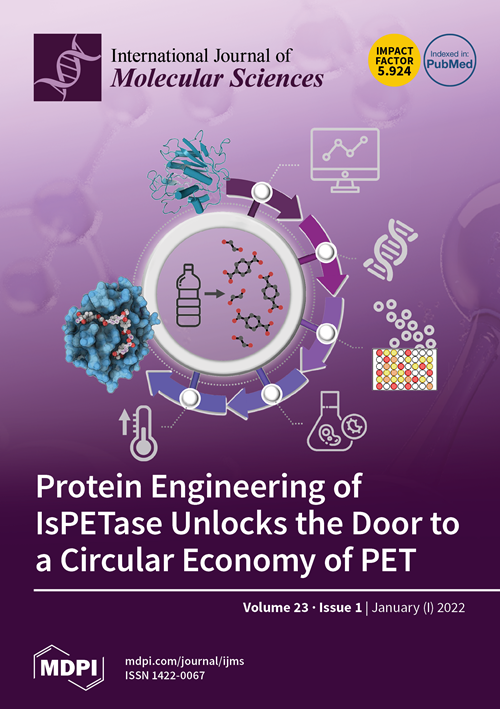Concentrations of Selected Adipocytokines in the Blood Plasma in Proximal Suspensory Desmopathy of Horses, with a Focus on Their Physical Activity—A Pilot Study
IF 4.9
2区 生物学
Q1 BIOCHEMISTRY & MOLECULAR BIOLOGY
引用次数: 0
Abstract
Chronic tendon and ligament diseases are commonly encountered in both athletic humans and animals, especially horses. Distal limb diseases, including suspensory ligament (SL) pathology due to anatomical, histological, and biomechanical properties, can be considered a model for tendon and ligament pathologies in humans. The appropriate selection of therapy is often crucial in optimising the healing process. One decisive factor influencing the possibility of returning to pre-disease training levels appears to be the utilisation of physical activity, including controlled movement, during the rehabilitation process. In the pathogenesis of musculoskeletal diseases and rehabilitation, adipocytokines play diverse roles. However, it is unclear what significance they hold in horses and in specific disease entities as well as the consequences of their mutual interactions. Recent studies indicate that in the pathogenesis of diseases with varied aetiologies in humans, their value varies at different stages, resulting in a diverse response to treatment. The results of this study demonstrate lower resistin concentrations in the venous blood plasma of horses with proximal suspensory desmopathy (PSD), while higher levels were observed in regularly trained and paddocked animals. The horses investigated in this study showed higher concentrations of resistin and IL-8, particularly in paddocked horses as well as in the working group of horses. The results suggest that these concentrations, including resistin in blood plasma, may be clinically significant. This attempt to explore the aetiopathogenesis of the processes occurring in the area of the proximal attachment of the suspensory ligament may optimise the procedures for the treatment and rehabilitation of horses.马匹近端悬雍垂脱毛症血浆中部分脂肪细胞因子的浓度,重点关注马匹的体力活动--一项试点研究
慢性肌腱和韧带疾病在运动员和动物(尤其是马)中都很常见。肢体远端疾病,包括因解剖学、组织学和生物力学特性而导致的悬韧带(SL)病变,可被视为人类肌腱和韧带病变的模型。选择适当的治疗方法往往是优化愈合过程的关键。影响恢复到病前训练水平的一个决定性因素似乎是在康复过程中利用体育锻炼,包括有控制的运动。在肌肉骨骼疾病的发病机制和康复过程中,脂肪细胞因子发挥着不同的作用。然而,目前还不清楚它们在马匹和特定疾病实体中的意义,以及它们相互影响的后果。最近的研究表明,在人类不同病因疾病的发病机制中,脂肪细胞因子在不同阶段的价值各不相同,从而导致对治疗的不同反应。本研究结果表明,患有近端悬雍垂脱弛缓症(PSD)的马匹静脉血浆中的抗阻素浓度较低,而定期训练和围场饲养的马匹体内的抗阻素浓度较高。本研究调查的马匹显示出较高的抵抗素和IL-8浓度,尤其是在围场马和工作马组中。结果表明,这些浓度(包括血浆中的抵抗素)可能具有临床意义。对悬韧带近端附着区域发生过程的病因机制进行探索,可优化马匹的治疗和康复程序。
本文章由计算机程序翻译,如有差异,请以英文原文为准。
求助全文
约1分钟内获得全文
求助全文
来源期刊

International Journal of Molecular Sciences
Chemistry-Organic Chemistry
CiteScore
8.10
自引率
10.70%
发文量
13472
审稿时长
17.49 days
期刊介绍:
The International Journal of Molecular Sciences (ISSN 1422-0067) provides an advanced forum for chemistry, molecular physics (chemical physics and physical chemistry) and molecular biology. It publishes research articles, reviews, communications and short notes. Our aim is to encourage scientists to publish their theoretical and experimental results in as much detail as possible. Therefore, there is no restriction on the length of the papers or the number of electronics supplementary files. For articles with computational results, the full experimental details must be provided so that the results can be reproduced. Electronic files regarding the full details of the calculation and experimental procedure, if unable to be published in a normal way, can be deposited as supplementary material (including animated pictures, videos, interactive Excel sheets, software executables and others).
 求助内容:
求助内容: 应助结果提醒方式:
应助结果提醒方式:


